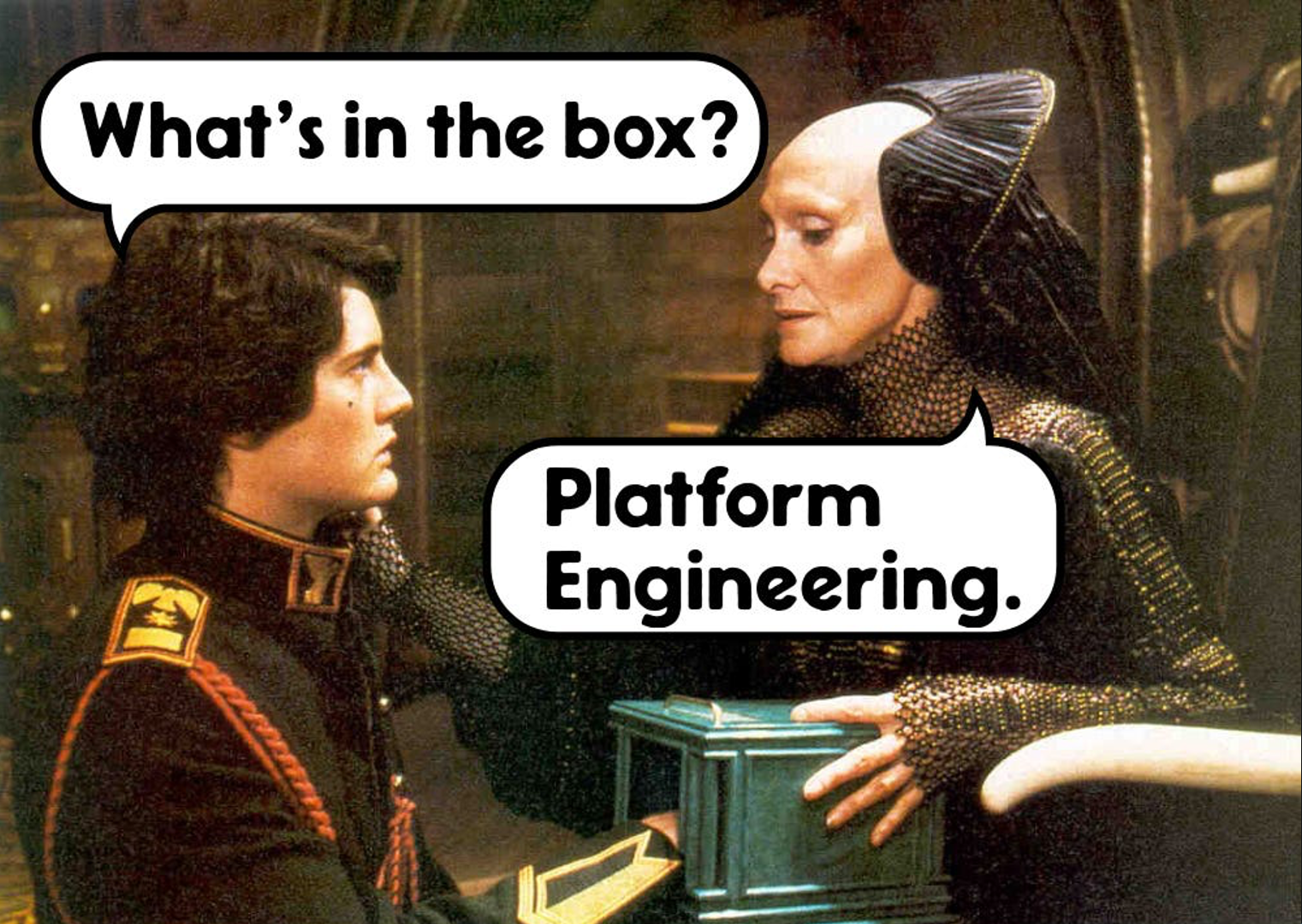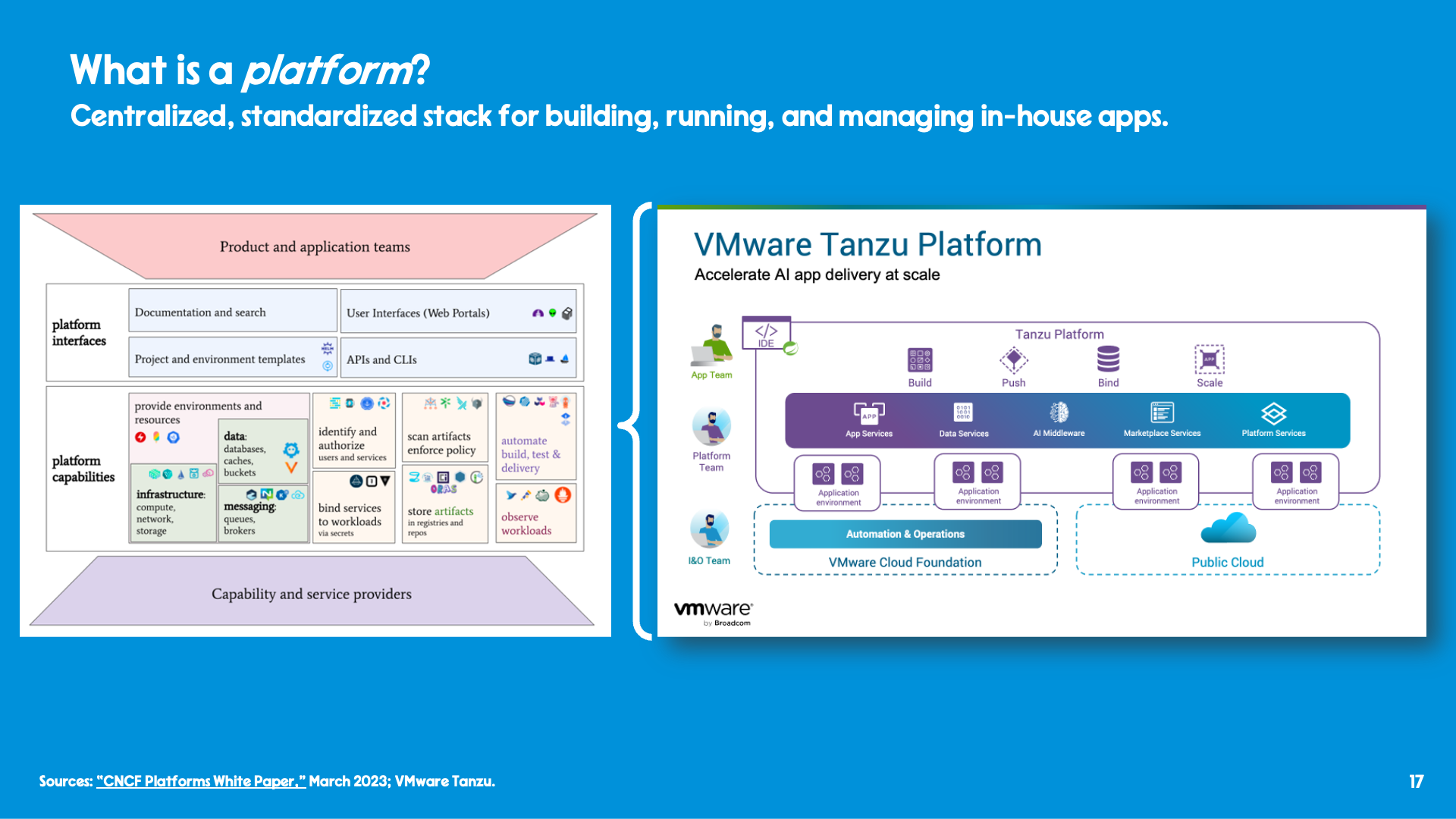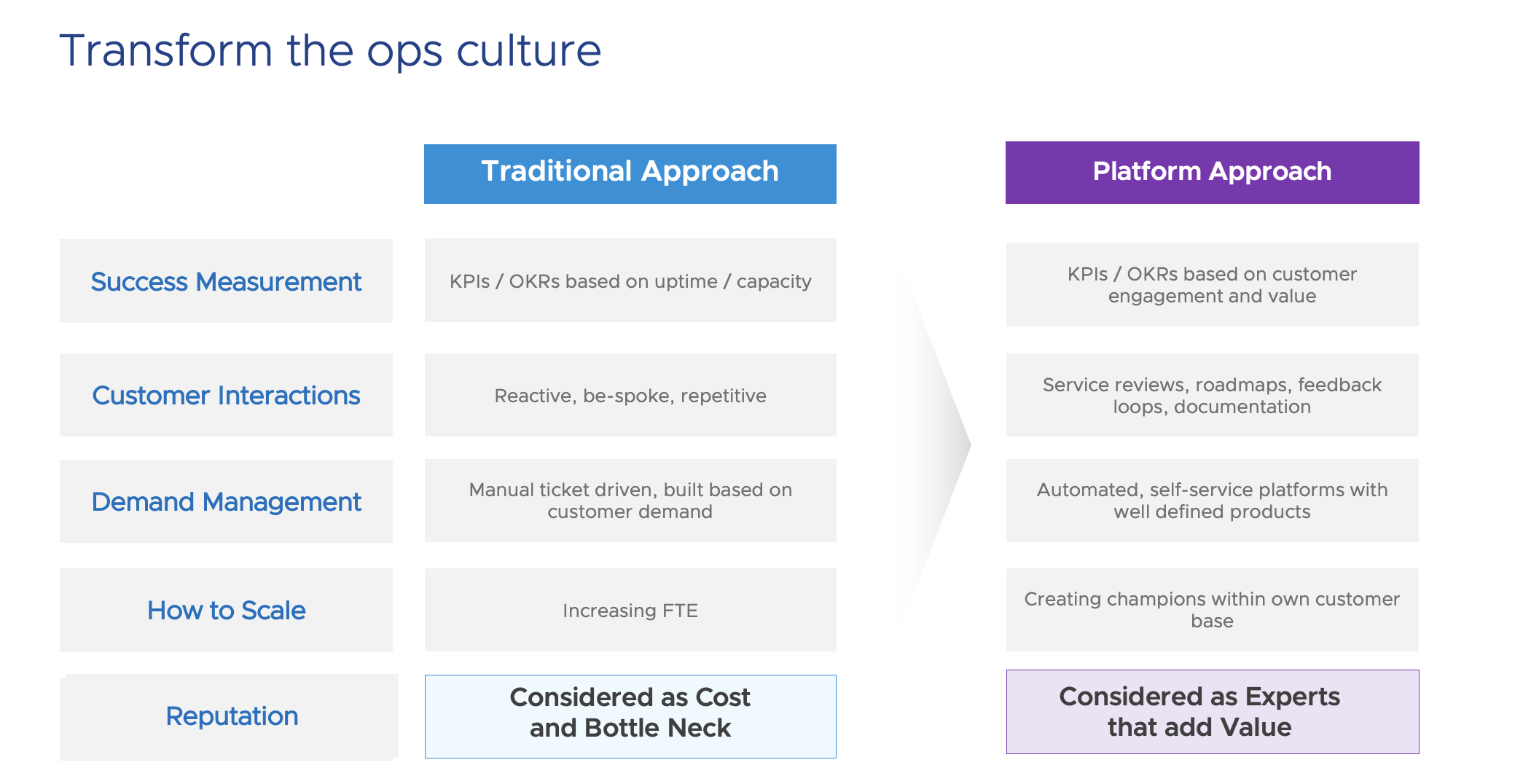Platform Engineering, Platform as a Product, PaaS

Platforms…?
What is “platform engineering”? What is “platform as a product”? An “internal developer platform”? What is a “platform”? What is “PaaS”?
Well, that’s a good question… Here’s my brief explanation:
A platform is the gooey layer of frameworks, middleware, tools and practices that developers use to build and then run their applications.
And, the canonical definition from Thoughtworks’ Evan Bottcher defined that gooey layer more precisely back in 2018:
A digital platform is a foundation of self-service APIs, tools, services, knowledge and support which are arranged as a compelling internal product. Autonomous delivery teams can make use of the platform to deliver product features at a higher pace, with reduced coordination.
You can think of it as everything above the infrastructure layer, whether that infrastructure is Infrastructure as a Service (IaaS), bare metal, virtualization, or Kubernetes. You get a blinking cursor from that infrastructure, and the platform is all the stuff you pile on top of it so developers can start coding and you can start running their applications in production.
What’s it look like?
First, there’s the actual platform stack. Here’s the CNCF reference architecture and the Tanzu Platform:

Second, there’s a new practices that infrastructure and operations staff start doing to not only run the platform, but support developers - to start treating developers as their customers:

Platform Presentations
For a more detailed overview and recommendations on how to make it work, check out my recent talk on platforms below:
And, there’s a shorter version if you can’t be bothered. There’s also some recent slides for these talks available.
Platform Marketing, Advocacy, & Community
If you’re running a platform, you need to do internal marketing, advocacy, and community management. Here’s an overview of why and how:
Also, I have a three part article series on platform marketing: part one, part two, and part three.
Also, download the longer paper that the series and my presentations are based on here.
More Info
More links on the topic:
- Here how we think about platforms and AI at Tanzu, where I work.
- Running a platform team means treating developers as your customers - a write from my colleague Judy and on what I think is the biggest, most important shift from traditional ops-think to platform-think.
- The Tanzu description of platform as a product.
- Here’s a talk about platforms at Mercedes-Benz and UBS, and here is one about platforms at Sky UK.
- “Improving JPMorgan Chase’s Developer Experience on the Cloud,” Nadi Away, JPMC, June 2022 - an overview of how JP Morgan Chase does platform marketing and advocacy.
- My bookmarks on the topic of platforms.